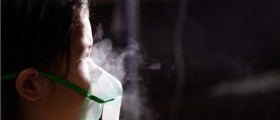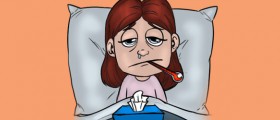
Respiratory tract, being responsible for breathing, is one of the most important vital systems in the human body. It can be divided into lower and upper respiratory tract. Lower respiratory tract consists of the trachea or the wind pipe, two bronchial tubes, bronchioles and lungs, while the upper includes nose, pharynx and larynx.
When it comes to respiratory infections, those affecting the upper respiratory tract are much more common, especially during cold and flu seasons. However, lower respiratory tract infections are also quite common and they are considered to be more serious and potentially dangerous.
Symptoms of lower respiratory tract infection
Two main types of upper respiratory tract infections are bronchitis and pneumonia. These infections often come as secondary from upper respiratory infections, which means that their specific symptoms are often preceded by upper respiratory infection symptoms such as runny or congested nose, sneezing, headache and sore throat.
Typical symptoms of lower respiratory infection include fever, chills, productive cough, body ache, headache, scratchy throat, difficulty breathing, wheezing, feeling of tightness in the chest, chest pain, headache, nausea, vomiting, fatigue and loss of appetite.
Treatment for lower respiratory infections
Diagnosing lower respiratory tract infections can be quite difficult as the causes can be both bacterial and viral. In order to make a precise diagnosis and to prescribe appropriate treatment it is necessary to do a chest X-ray and to get a blood test as well.
If the tests show that the cause of the infection is bacterial, it will be necessary to take a course of antibiotics, oral or in form of injections. Procaine penicillin or amoxicillin are the usual choice of antibiotics for lower respiratory infections.
There is no specific treatment for viral infections, as viruses do not respond to antibiotics. The treatment will consist of alleviating the symptoms with over-the-counter medications, such as cough drops or syrup, analgesics, medications for lowering the fever, decongestants, expectorants and such.
A person who has a lower respiratory infection should get plenty of bed rest until the infection clears completely. It is recommended to eat healthy, especially foods rich in vitamins, to take vitamin and mineral supplements, drink warm tea and get plenty of fluids.
Acute lower respiratory infection can be quite severe and potentially very dangerous, even fatal. Therefore, it is vital to see a doctor as soon as the symptoms mentioned above start showing. In some cases the patient will have to be admitted to a hospital, where he or she will be closely monitored for potential complications and receive more aggressive treatment.

















Your thoughts on this
Loading...